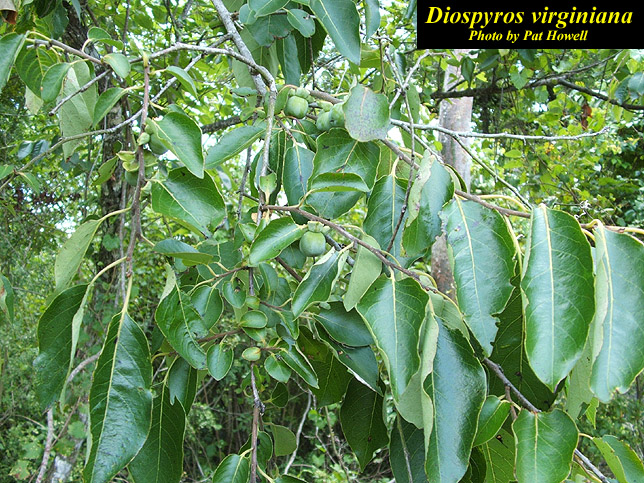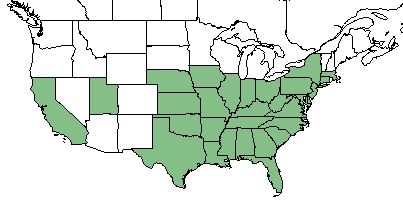Diospyros virginiana
Common Names: Common Persimmon [1]
| Diospyros virginiana | |
|---|---|

| |
| Photo by the Atlas of Florida Plants Database | |
| Scientific classification | |
| Kingdom: | Plantae |
| Division: | Magnoliophyta - Flowering plants |
| Class: | Magnoliopsida - Dicots |
| Order: | Ebenales |
| Family: | Ebenaceae |
| Genus: | Diospyros |
| Species: | D. virginiana |
| Binomial name | |
| Diospyros virginiana L. | |

| |
| Natural range of Diospyros virginiana from USDA NRCS Plants Database. | |
Contents
Taxonomic Notes
Synonym: D. virginiana var. pubescens (Pursh), D. virginiana var. platycarpa (Sargent), D. mosieri (Small)
Variety:none
Description
D. virginiana is a perennial tree of the Ebenaceae family native to North America. [1]
Distribution
D. virginiana is found throughout the east coast and southeastern United States as well as California and Nevada. [1]
Ecology
Habitat
D. virginiana is easily adaptable to a variety of habitats. It is found in rocky hillsides, sandy woodlands, and even river bottoms. It prefers, terraces of streams and river bottoms that have clay in the soil. It prefers full sun but can tolerate shade. [1]
D. virginiana is cosidered one of the most common midstory vegetation in the Upper Panhandle Savanna. [2]
Phenology
D> virginiana commonly flowers in April and May. [3]
Fire ecology
Prescribed burns can be used to control the species, but fire exclusion can decrease its likelihood of surviving. [1]
Use by animals
Bess use the nectar from the flowers for honey. White-tailed deer eat the twigs and leaves. The fruit of the tree is eaten by squirrel, fox, skunk, deer, bear, coyote, racoon, opossum, quail, wild turkey, catbird, cedar waxwing and other various birds. [1]